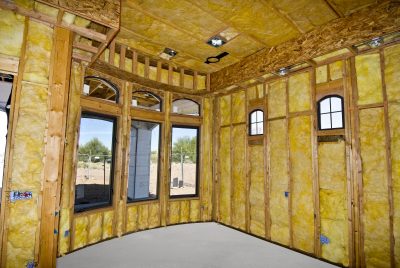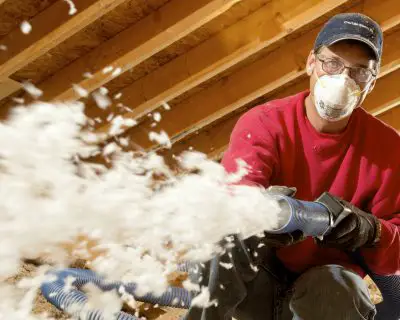 It’s cold again, and before long most of North America is frigid enough to kill you. And while your house will almost certainly keep you alive this winter, the cold, cruel blast will likely do unnecessary damage to your finances and comfort level if you don’t take action.
It’s cold again, and before long most of North America is frigid enough to kill you. And while your house will almost certainly keep you alive this winter, the cold, cruel blast will likely do unnecessary damage to your finances and comfort level if you don’t take action.
Insulation is your main defense against winter, of course, but it comes with a lot of questions. Where should it go? What kind should you use? How much will it cost? There’s still time before winter arrives to build defenses around your pocket book and your extremities by installing more insulation, and the process is simpler than it seems. All you need to remember is this simple phrase: “At least 22 up top”.
Over 40% of heat loss can come from a poorly insulated roof
 Of all the places to apply more insulation in a home, attics usually offer the biggest bang for the buck. No location is easier and faster to upgrade, and the attic insulation industry is mature, well equipped and experienced enough to do a good job in a short time. Investing less than $1000 and hiring a professional for a few hours could result in significant cost savings to heat and cool many Canadian homes – year after year. While it’s true that some homes need extra insulation in walls, basements, and floors, more likely than not, boosting attic insulation is the lowest hanging fruit on the tree.
Of all the places to apply more insulation in a home, attics usually offer the biggest bang for the buck. No location is easier and faster to upgrade, and the attic insulation industry is mature, well equipped and experienced enough to do a good job in a short time. Investing less than $1000 and hiring a professional for a few hours could result in significant cost savings to heat and cool many Canadian homes – year after year. While it’s true that some homes need extra insulation in walls, basements, and floors, more likely than not, boosting attic insulation is the lowest hanging fruit on the tree.
So how much attic insulation is enough? As much as you can afford. I disagree with the experts who believe there’s an upper limit for attic insulation. I’ve seen many super-insulated houses that use tiny amounts of energy with R60, R70, and even R90 in the attic. Minimum levels of attic insulation vary across the country, but if there’s anything less than 22 inches of depth on the floor of your attic, you need more. You should have at least R60 up top, but as I said, more is better.
It goes without saying that everyone wants to spend less money to heat their homes. Governments and utility companies across Canada want to help make things as affordable as possible, so they’ve introduced financial incentives and rebates to help reduce the energy consumption of Canadian homes, including programs for insulation upgrades. Trouble is, it’s not easy to discover what kind of programs are available, when they’re available, and how to apply. Provinces and utility companies each offer different programs. New incentives show up and old ones disappear. Getting free money for home insulation is not as simple as it may seem, and that’s why a one-stop source for a Canada-wide home insulation incentives program was created.
NAIMA Canada, an association representing Canadian insulation manufacturers, maintains an online tool (naimacanada.ca/en/incentives–rebates) for discovering how to get financial help insulating homes, businesses and institutions. After clicking on the type of building you’ve got, the province it’s in, and perhaps the utility company that provides you with service, you’ll then get a detailed list of all the programs available to you, with clickable links, email addresses and phone numbers to help you find more information and sign up. There’s never been anything else like this online information database in the country, and it’s constantly updated as programs change.
Insulation may not be top of mind when deciding which home improvement upgrades you’ll invest in, but it’s one of the wisest for improving the energy performance of your home. Not only will it help make your home cozier, but it will also help you save money so you can afford other things in life – especially if you are provided with free money from the government or your utility company. All it comes down to is something as simple as “at least 22 up top.”


